Category: Dental Assistant
How to Sterilize Dental Instruments After Intra Oral Dental Assistant Training
July 31, 2020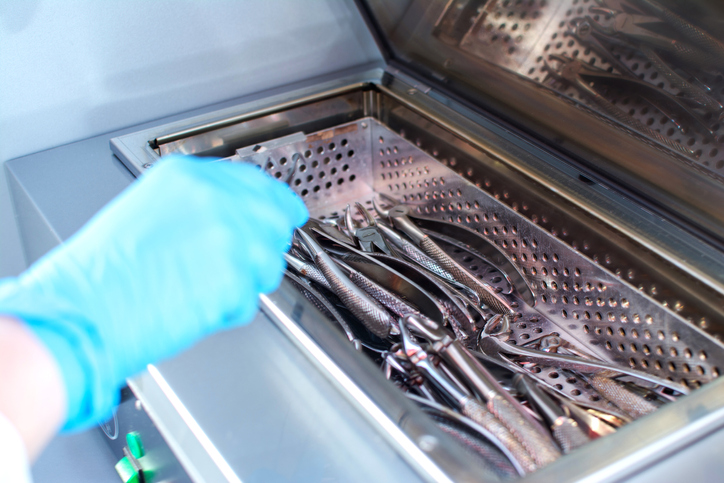 Any instruments used in a dental practice must be sterilized effectively and cleaned thoroughly enough to safely be used on clients. Dental instruments are bound to interact with a person’s microbes and bacteria, and therefore risk infection.
Any instruments used in a dental practice must be sterilized effectively and cleaned thoroughly enough to safely be used on clients. Dental instruments are bound to interact with a person’s microbes and bacteria, and therefore risk infection.
Therefore, it’s important to control any possible contamination for the safety of all parties and to maintain efficiency at the dental practice. To do this, you’ll need to sterilize them and ensure that they are as clean as you can possibly get them, and there are steps you’ll have to take to get it done.
Here are some tips for sterilizing dental instruments.
The Preparation Phase: First Steps in the Sterilization Process
Before you begin sterilizing any instruments, make sure you are wearing PPE (personal protective equipment). This can include utility gloves, face masks, and special eyewear to help protect you from any microbes you could come into contact with, as well as from contaminating instruments with anything you’re possibly carrying.
You must also be sure that instruments are cleaned properly before being sterilized (though do not wash them by hand), and that they are soaked and sprayed with a solution to prevent the buildup of fluids from hardening on them. Ideally, you would do this via automated instrument washers or disinfectors, or with an ultrasonic solution that uses sound waves to expedite the cleaning process.
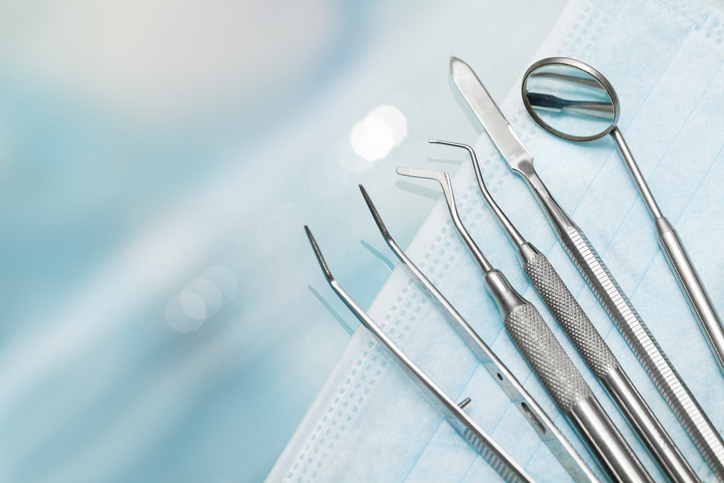
Students in dental assistant school can expect to learn how to sterilize instruments during their training, and they should also know to store them in a room separate from where dental procedures take place to avoid potential cross-contamination.
Additionally, because many dental instruments are sharp, they should be handled with great care while wearing heavy-duty gloves when brought to this separate room so that you can avoid injuring yourself. Bring them to this room to be sterilized after an appointment, and separate clean and dirty instruments on separate sides of a table, so you know which one is which.
The Sterilization Phase Explained for Dental Assistant School Students
Before you begin properly sterilizing your instruments, be sure they are dried out first. They will be wet after you place them in the sterilizer if they are not, and this creates a health and safety hazard as well as possible corrosion.
Once they are dried, package them and seal them in an autoclave wrap to minimize any exposure to air, and load them without placing them too close to one another. Be sure to use locked, closed-system cassettes to save time, and to avoid contact with hands and possible contamination. If possible, have a cassette rack readily available so you can sterilize instruments without overloading.
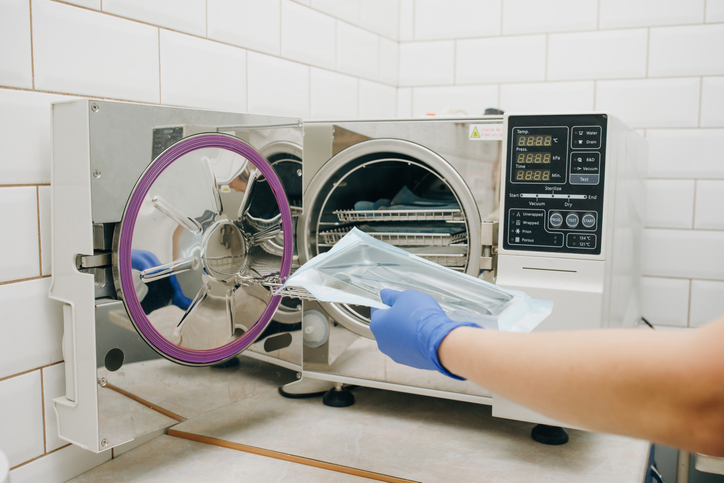
Students in intra-oral dental assistant training would also be wise to learn to keep instruments inside their packaging before being used, whether these are autoclave wraps, pouches, or other appropriate packaging materials. Package them carefully to avoid poking holes, as you’ll need to restart with a new package if you do.
Put the instruments in the sterilizer, and begin the process once it is full. Take the instruments out once the sterilization has finished, and store them away from any dirty instruments. Ensure no holes have appeared through the packaging (they will need to be sterilized once more if this happens), and discard the piece of paper attached to the sterilizer.
Want to take courses at dental assistant college?
Contact Medix College for more information!
How to Prevent the Spread of COVID-19 as a Dental Assistant College Graduate
July 02, 2020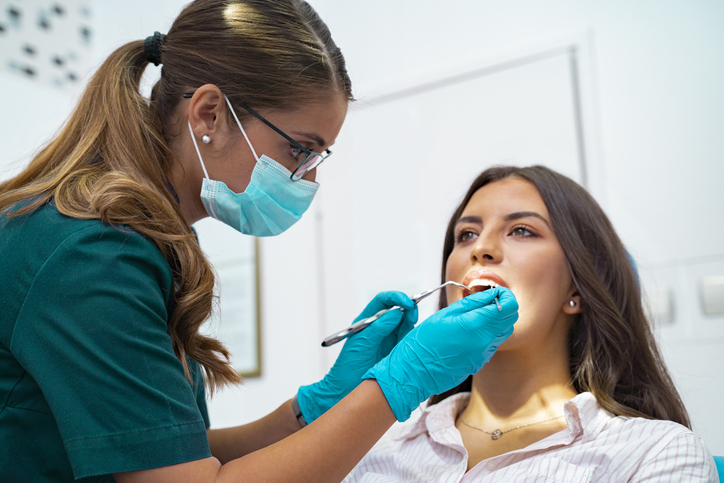 Since the outbreak of COVID-19, dental offices across the country have been closed for all non-emergency appointments. As they slowly prepare to resume normal service, dental professionals need to rethink how they approach their work in order to minimize the risk of spreading COVID-19.
Since the outbreak of COVID-19, dental offices across the country have been closed for all non-emergency appointments. As they slowly prepare to resume normal service, dental professionals need to rethink how they approach their work in order to minimize the risk of spreading COVID-19.
Dental assistants play an important role in dental offices, public health centres, and other clinics. They ensure that everything runs smoothly and work closely with other dental professionals and patients. Read on to find out how you could help dental offices to run safely and securely in light of COVID-19.
Screen Patients Before They Enter the Dental Office
The first step to preventing the spread of COVID-19 in the dental office is ensuring that infected persons don’t enter. Whilst it’s impossible to do this with complete certainty, there are steps that you can take to reduce the likelihood of this happening.
After you graduate from dental assistant college, you may be responsible for screening patients when they make an appointment and before they enter the dental office. This might involve finding out whether they have travelled outside Canada recently, or been in contact with someone who has. You may also need to ask if they have experienced any symptoms of infection, such as a fever, a cough, or breathing difficulties.
If they answer yes to any of these questions, you might have to postpone the appointment or offer a virtual appointment. In addition, you may need to check patients’ temperatures before they enter the dental office, and prevent anyone with a high temperature from entering.
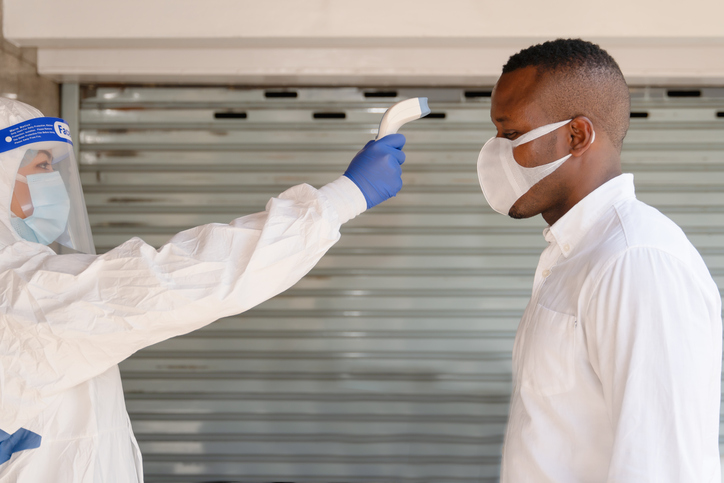
Wear a Mask – and Provide Them for Clients
In order to stop the spread of COVID-19, you should ensure that all dental staff and patients are wearing some form of personal protective equipment (PPE). According to the Canadian Government, the virus can be spread in three ways:
- Respiratory droplets when you cough or sneeze
- Close personal contact such as touching or shaking hands
- Touching something with the virus on it, then touching your face
Wearing an N95 respirator or a surgical mask will stop the spread of the virus through respiratory droplets. It acts as a physical barrier, and also stops patients from spreading it through touching fingers and hands to their mouth. As well as this, additional PPE like gloves can help to stop the spread through contact.
Separate Patients in the Waiting Area and Common Spaces after Dental Assistant College
In dental assistant training, you will learn that one of your main responsibilities as a dental assistant will include welcoming patients and scheduling appointments. In order to stop the spread of COVID-19 in dental offices, you should ensure that patients are two metres apart while in the waiting room and other common areas.
In order to do this with ease, you may need to reduce the number of appointments that are made and avoid any overlapping appointments. In addition, you should tell patients to come alone if possible, to limit the number of visitors.

Are you interested in dental assistant college in Ontario?
Contact Medix College today to learn more!

Fluoride is a mineral that can be found within the surface of the Earth, and in several different forms. In dentistry, fluoride treatments can help clients to prevent tooth decay from progressing, as well as to make enamel stronger and more resistant to acids that would otherwise weaken it.
Curious about how it works, and why it’s so important for clients’ oral health? Here are five facts about fluoride you need to know if you’re considering dental assistant school.
Fluoride Helps to Protect Teeth from Tooth Decay
Since oral bacteria makes acids through mixing with sugars from drinks and food, fluoride can be used to protect the teeth from acid attacks that can weaken them, and can also reverse tooth decay during its earlier stages. You can also provide professional fluoride treatments such as varnish to help protect clients’ teeth even further, as optimal protection from tooth decay comes from receiving fluoride from various sources.
Fluoridated Water is an Even Better Way to Do It
Adding fluoridated water to toothpaste is considered the best way to protect one’s teeth from decay, as fluoride toothpaste by itself is not enough. Although fluoride naturally exists within water, it is not typically at a level high enough to help protect one’s teeth.
Those in dental assistant school should also know that fluoridated water is safe for children, and drinking it while their teeth are growing will make them likely to develop stronger teeth that become increasingly resistant to decay over time.
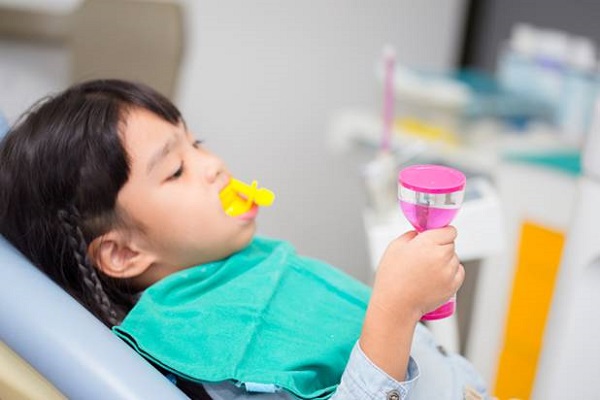
Fluoride Can Protect Teeth Through Remineralization
Essentially, the bacteria found within plaque around the teeth comes directly into contact with the enamel, eating away at it and taking minerals out of it while doing so — a process known as demineralization.
Remineralization, a process that naturally happens within the mouth, is what is necessary to help strengthen weakened enamel. Fluoride can promote this process by ensuring the enamel strengthens and becomes more resistant.
Fluoride Can Also Be Found in Some Foods You Eat
Although brushing one’s teeth twice daily with fluoridated toothpaste is the best way to consume fluoride outside the dentist’s office, you may be surprised to learn that it can also be present in food. More specifically, fluoride can be found in milk, eggs, yams, fish (particularly if canned), and even red meats. While these foods are low in fluoride, with only about 0.1 mg per serving in each of them, you can encourage clients to introduce these foods into their diet.
Dental Assistant School Students Should Know How Much Fluoride Clients Need
Since fluoride application is something you may practice in a dental assistant course, it’s important to be aware of exactly how much fluoride clients should be consuming. This can depend on the client’s gender, age, and the amount of fluoride already present in their drinking water.
Children between four and 13 years of age are recommended to have only one to two milligrams, and only half a milligram for infants and children under four. For males aged 14 and over, the recommended amount is four milligrams per day, while females of that same age range should consume three milligrams daily.
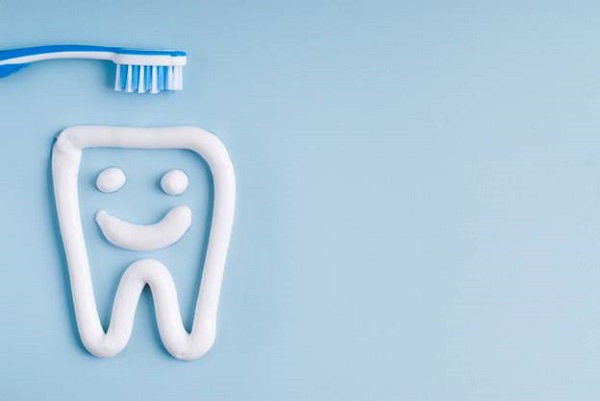
Want to attend dental assistant college?
Contact Medix College for more information!

Whether it’s your first or fifth, interviews can be nerve-wracking. It can be difficult to know the ‘correct’ answers or how to prepare, especially if you really want the job and don’t have much interview experience! Read on to discover four common interview questions and how to answer them.
Tell Us About Yourself
The ‘tell us about yourself’ question is often the very first one an interviewer will ask for almost any job. It can difficult to answer because it is so open-ended. Do they want to know your hobbies and interests? Your life story? Or just about your work experience and education?
There is no right answer to this question. It’s often used just as a warm-up and a way to get to know you. Try to keep it career-focused and describe your recent dental assistant training and experience, as well as your career aspirations.
Prepare your answer before and have a clear beginning, middle, and end. Try not to give too much information, as you don’t want to repeat yourself later in the interview.

Answering Behavioural Questions After Dental Assistant College
Behavioural-based questions like ‘tell us about a time you overcame a problem’ are an opportunity for you to describe to an employer how you are in the workplace. These are usually focused on a problem or a conflict. It’s a good idea to prepare answers to these questions before the interview, so that you have an answer ready.
A good way to answer is using the STAR method. This is:
S – situation
T – task
A – action
R –result
Start by setting the scene. For example, maybe you were on a work placement and a young child was crying before their appointment because they were scared. The task would be that you needed to calm the child. The action is how you handled the situation. Did you use your communication skills to soothe the child? Maybe you offered them a toy or some kind of reward for going to their appointment. And finally, the result is that the child went to their appointment, and was even looking forward to the next one!
What is Your Own Oral Hygiene Routine?
If you are asked about your own oral hygiene in an interview after dental assistant college, the employer is probably not actually interested in how you clean your teeth. They want to see your passion for dental hygiene, and to hear the kind of advice that you would give patients. Use this as an opportunity to show your knowledge of dental hygiene, as well as your enthusiasm for the subject.

What Are Your Strengths and Weaknesses?
Questions about strengths and weaknesses are also common. It might seem simple to talk about your strengths, but try to think carefully and match it to the job description. Choose one technical skill and one soft skill. Take a moment to expand on these and give examples.
Weaknesses can be slightly more complicated. This is an opportunity to show that you are self-aware. Don’t just say, ‘I’m very disorganized’ – explain how you are working to improve your weakness. You could say that you are not naturally organized, so you always use to-do lists and a weekly planner to make sure that you are on top of all of your tasks.
Do you want to find out more about a dental assistant course?
Contact Medix College to learn more!
How Students in Dental Administration Training Can Improve Office Productivity
February 19, 2020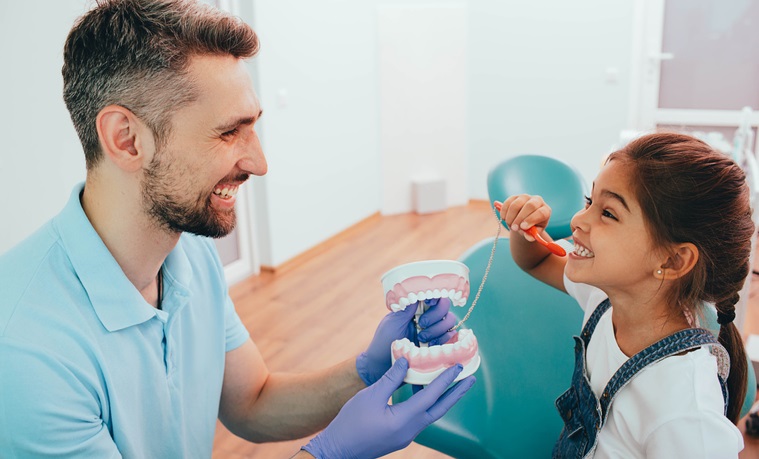 Keeping a dental practice running is no easy task. You need to make sure there is a steady flow of patients, avoid keeping people waiting for too long, and maintain communication between dentists and the front desk.
Keeping a dental practice running is no easy task. You need to make sure there is a steady flow of patients, avoid keeping people waiting for too long, and maintain communication between dentists and the front desk.
Dental administrators are responsible for ensuring the dental surgery runs smoothly. They manage appointments, patient information, billing, and everything in between!
Read on to discover how dental administrators can increase productivity at dental practices.
Become a Dental Administrator and Allow Patients to Book, Reschedule and Cancel Appointments Online
Historically all dental appointments were made over the phone. If it was a particularly busy period, patients could be left on hold, meaning they were less likely to make an appointment, and even less likely to cancel if diary changes meant that they couldn’t make it.
Nowadays, dental practices should offer the option for patients to make appointments online. This will increase the number of appointments made. Allowing patients to change or cancel their appointment online will also reduce the number of no-shows.
Introducing an online booking system will increase productivity by freeing up some of the dental staff’s time. Dental staff will no longer have to spend hours on the phone scheduling and rescheduling appointments as this can be done via the online system. Dental office administration college will show you how to use different kinds of office software for scheduling appointments in a simulated dental office environment.
Send Automated Follow-Ups and Reminders via Text or Email
It is also a good idea to send automated reminders via text or email to patients one or two days before an appointment. This will save dental staff having to spend time calling patients to remind them that they have an appointment coming up.
Automated messages are also a good way to gather feedback. An online form asking patients to evaluate their experience could be automatically sent to patients after every appointment.
If a patient hasn’t had an appointment in over six months, it might be a good time to suggest scheduling the next one. This could also be done by an automated message to help the practice retain regular patients.
Know How Long Routine Procedures Take
As part of your dental administration training, you will become familiar with some of the more common dental procedures. This will enable you to answer any patient questions, and will also help with scheduling appointments as you will know roughly how long each one is likely to take. The average appointment including cleanings, fillings, and checkups takes under an hour.

If you find that patients are often left in the waiting room for more than 20 minutes, it might be a good idea to investigate why this is. Are you leaving enough time for appointments? Are you overscheduling? Take note of how long appointments take on average and allow an extra 5 or 10 minutes between appointments for the dentist to catch up. Leaving patients waiting for too long every time will have a negative impact and could result in bad reviews and lost clients.
Use Digital Software to Store Patient Information
As a dental administrator you will be responsible for maintaining patients’ medical data. This is highly confidential, so it’s important it’s stored safely. Using a digital software database is the best way of managing this information.
Some systems allow patients to upload their own information directly using computers and tablets in the dental office. This will make the practice more productive and help avoid human errors, as dental staff will not input data manually from a paper form to a computer.
Do you think you have what it takes to become a dental office administrator?
Contact Medix College to find out more!
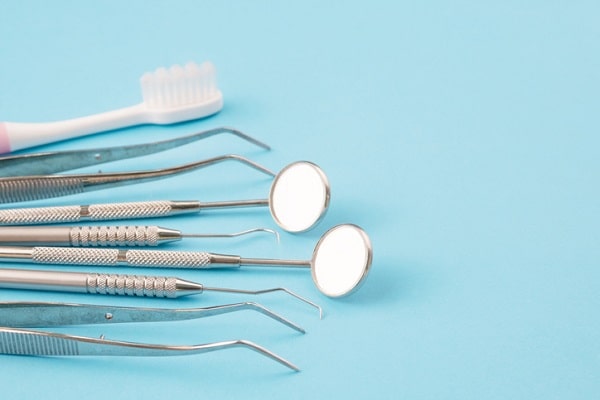
As a dental assistant you will be trained to educate patients and families on dental health, take and develop x-rays, and provide chair support to the dentist along with many more tasks that keep a dental office productive and successful. One of your other important tasks might be ordering dental and office supplies, and managing inventory.
There are so many items needed to make sure everyone in a dental office can do their work without interruption. From pens and printer paper to gloves and other lab supplies there is a lot to keep track of. This is a job that requires attention to detail and a high level of organizational skills. Here are a few tips that should help keep you and your co-workers stocked up.
Remember FIFO
FIFO is a term from accounting used to report the value of inventory and means “first in first out.” For office and dental supplies this is how you will make sure the oldest supplies are used first and that you use things before their expiry dates. Following this principle also means that you will automatically be keeping track of inventory, how long it takes to use supplies, and when to order new inventory.
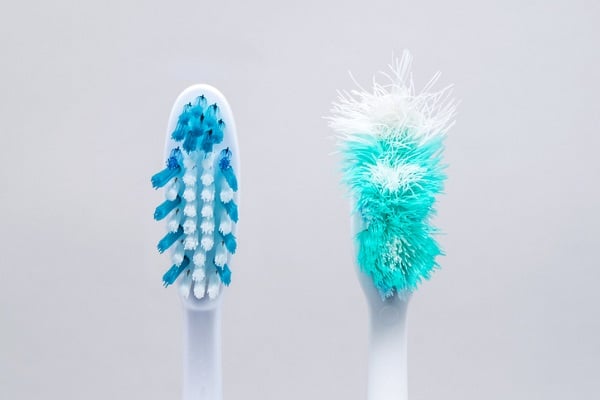
The FIFO guideline will also affect how you organize your supply closets. When you re-stock any item, you will shelve it behind the older items to make sure the newer items aren’t used first. Pens can get old, paper yellows, but FIFO and regular inventory checks will stop unnecessary waste from occurring.
Price Watch and Buy in Bulk
The same way affordability may be a concern when you are looking for a dental assistant college, you will want to keep costs down for supplies in a dental office. If you are able to purchase large quantities of items at a reduced cost, do so. Reducing the frequency of supply orders as much as possible is an extra benefit of this strategy.
To buy in bulk effectively you will have to monitor use of supplies to make sure the bulk purchase is worth it. Additionally, for items that do not have special bulk prices, it is advisable to watch out for any sudden price hikes or sudden increases of supply use. These things will change your budget. Effective spending or a well calculated budget will make sure important work is done on schedule.
After You Finish Dental Assistant School: Organize and Simplify
Keep your inventory organized. One way to do this is to keep the most frequently used items around eye-level. Of course, this may vary from employee to employee, but as a general rule you want to store infrequently used items high if they’re light and low if they’re heavy. Overall it is helpful to have a diagram of the supply closet showing where everything is and how much is left.
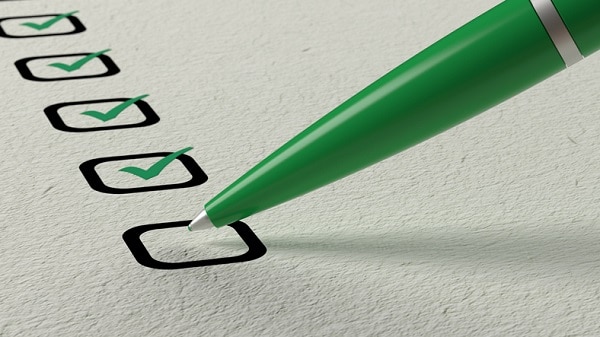
When you organize an inventory list with a supply-log and track how much of an item or product is used over time you can then pre-set order dates. This will simplify your ordering process and make sure you do not run out of supplies before new stock arrives. Unlike an exam during your intra oral dental assistant training, you will not have to rely on your memory when you do this. Also, if you’re out of the office, then your organized and simple inventory plan will allow someone else to make sure there are supplies when you return.
Looking for more information about dental assistant school?
Contact Medix College to learn about our programs.

Some foods are better for your teeth than others. While foods like sugary candy, carbonated soft drinks and starchy foods can cause cavities and tooth decay, there are plenty of others that can work wonders for maintaining your oral health. What’s more, they’re also good for you in more ways than simply keeping your teeth healthy.
Alongside regular brushing and flossing, eating certain foods can help keep your—and your patients’—teeth in great shape. Here are three of the best foods for teeth if you’re about to start your training to become a dental assistant.
1. Cheese Can Be a Great Source of Protection Against Cavities and Tooth Decay
It’s a beloved food by many, and one with surprising benefits for your teeth. For one, cheese, like most dairy products, generally contains plenty of calcium and vitamin D. Moreover, a study from the journal General Dentistry in 2013 reported that a group of children aged 12 to 15 years old who ate cheddar cheese had lower levels of acid that can cause tooth decay compared to children who consumed sugar-free yogurt or milk. When each subject’s pH levels were measured 10, 20 and 30 minutes after consumption, a sharp increase in those levels were shown by children who ate cheese. That suggests that cheese can protect against tooth erosion and cavities. Furthermore, because cheese contains both protein and calcium, it can improve the strength of one’s tooth enamel as well.

2. A Number of Vegetables Can Be Helpful As Well, Including Raw Carrots
There are many different types of vegetables that can be helpful for maintaining oral health, such as leafy greens, and which have other excellent health benefits. However, carrots are one food with particularly great tooth-friendly benefits. Carrot sticks can increase the production of saliva in one’s mouth, which helps lower the harmful effects of acidic foods. They are also rich in fibre and can minimize the risk of developing cavities. Plus, they are a fantastic source of vitamin A and chewing on them can help cleanse and disrupt the buildup of plaque on teeth. Since intra oral dental assistant training emphasizes educating others about maintaining optimal dental health, this is one food whose oral benefits are worth mentioning to future patients.
3. Raisins are Another Food for Those in Dental Assistant Training to Embrace
Raisins are full of fibre and iron, can decrease blood pressure, and are low in fat. Perhaps surprisingly—given their sweet and sticky nature—raisins may also help fight cavities. Raisins not include table sugar or sucrose, but they are naturally sweet in spite of this. Because sugar helps to cause bacteria to stick to the surface of teeth, plaque is produced as a result. Raisins, on the other hand, contain phytochemicals (or plant antioxidants), which can kill the plaque bacteria that lead to cavities. Although some dental experts advise against raisins because of how naturally sweet and sticky they are, those in dental assistant training should know that such phytochemicals found in raisins have been known to stop the growth of bacteria in the mouth.

Do you want to attend a dental assistant college in Ontario?
Contact Medix College to learn more.
5 Types of X-Rays You May Work with After Dental Assistant Training
September 20, 2019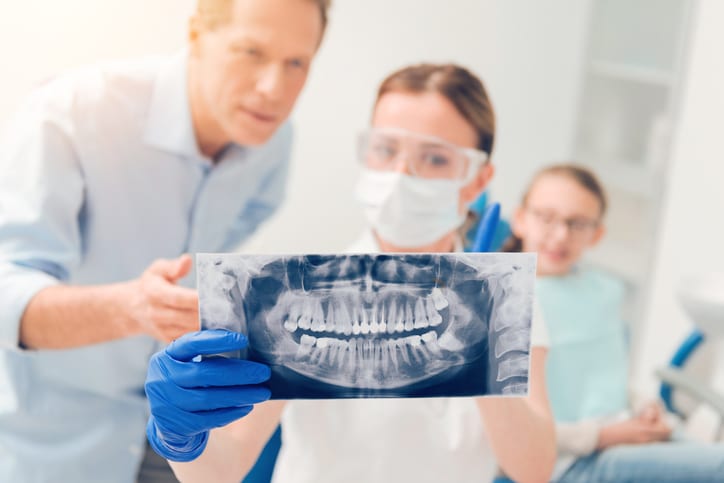
X-rays provide dental assistants and dentists with images of clients’ teeth so that they can assess their oral health. By looking at these images, dentists can identify complications like cavities and tooth decay, and recommend different procedures and treatments to fix the problem.
How often a client will receive x-rays depends on the client’s dental history and records. Some clients may need an x-ray as frequently as every six months, while other clients with no history of dental or gum problems will only require an x-ray every couple of years.
Read on to discover different types of x-rays you might use in your career as a dental assistant!
1. Bitewing X-rays Are a Very Common Type of X-ray
A bitewing x-ray provides an image of the upper and lower posterior teeth as well as their roots and supporting bones. A bitewing x-ray allows the dentist to determine if the crowns of your back teeth match up as they should. When this technique is used, clients are asked to bite down on a piece of x-ray film that allows for the image to be captured. This procedure is one you’ll encounter a lot after dental assistant school as it helps dentists detect changes in the jawbone structure that might be caused by gum disease.
2. Periapical X-rays Give Dentists a Lot of Detail
The periapical x-ray is used to capture an image of the entire tooth from the crown to the root. The periapical x-ray is taken by placing a film and attached film holder into the client’s mouth. The client is asked to bite down firmly onto the device so that it stays immobile until the x-ray is taken. Periapical x-rays are useful for detecting changes in the root of the teeth and its surrounding bone structure.
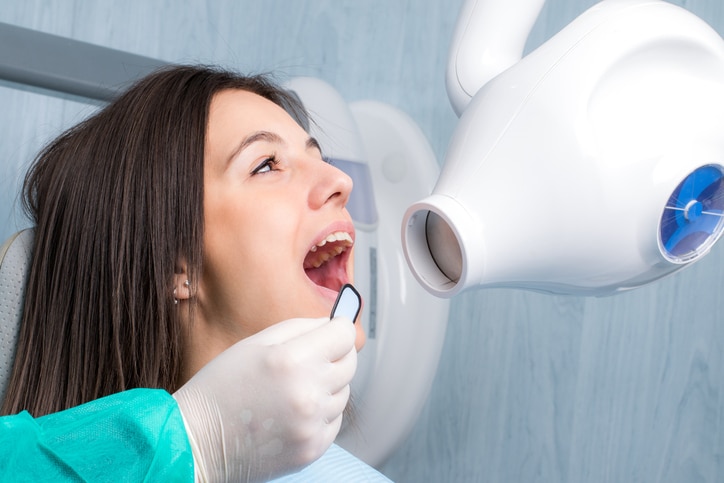
3. Panoramic X-rays Are Similar to Panoramic Photos
For a panoramic x-ray, dental clinics use a machine which rotates in a semi-circle pattern in front of the client’s head. This type of x-ray shows images of the teeth, jaws, nasal area, sinuses and joints of the jaw. In your career after dental assistant training, you may come across panoramic x-rays when clients are in need of certain types of treatments. For example, they are used to plan for orthodontic treatment and procedures, such as braces, implants, and dentures.
4. Occlusal X-rays Are Common in Pediatric Dentistry
The occlusal x-ray provides an image of the upper and lower jaw. This type of x-ray is frequently used by pediatric dentists to find teeth that have not yet broken through a child’s gums. The technique used to administer this type of x-ray is similar to the bitewing technique.
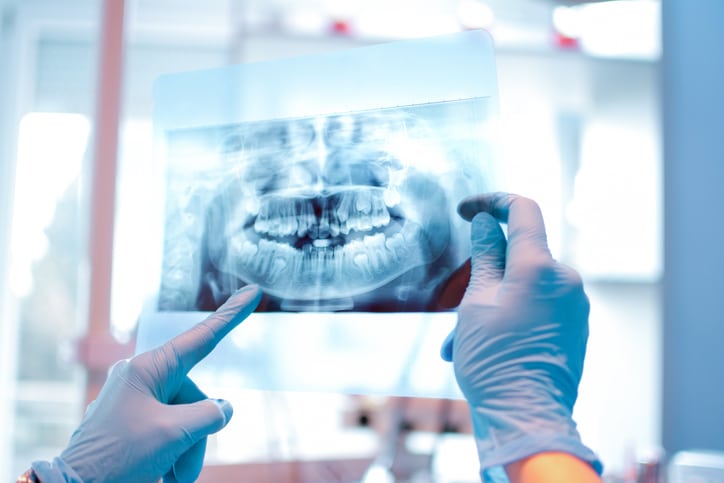
5. You May Administer Full Mouth Survey X-rays After Dental Assistant Training
A dentist might order a full-mouth survey x-ray for a patient. This type of x-ray is done by using a combination of techniques including the bitewing and periapical x-rays. Dentists will usually ask patients who are new to a clinic for a full mouth survey x-ray. These images can then be used in later interventions to identify any possible changes. A full mouth survey x-ray might also be required before a significant procedure, such as a root canal, gum disease treatment, and extractions.
Are you looking for a dental assistant college in Ontario?
Contact Medix College to find out more about our programs.
How to Make Children Comfortable at the Dentist after Dental Assistant School
August 30, 2019
The prospect of going to the dentist is pretty frightening for a lot of children. If you want to be a dental assistant, an ability to help children feel calm and comfortable in the dentist’s office will be a big asset in your career. Simply being capable of projecting calm and confidence can help children feel relaxed, which in turn makes your and the dentist’s jobs much easier.
For a child, even a brief annual check-up can seem daunting. If you are someone who is great around children, and you combine that personality with the appropriate training, you could thrive in your career in the dental office. Read on to learn how you can help children feel less nervous about going to the dentist.
Stay Positive Around Children So That They Know They Are in Safe Hands
As a health professional, you want to stay upbeat around children without misleading them. Saying things like “this won’t take long and you won’t feel a thing” may actually be counterproductive. After all, it may not be true! If the appointment goes longer than expected or if the child does feel some discomfort, then they are going to feel misled. Instead, tell them how brave they are being and talk about how you’re helping make sure their smile is like brand new. Likewise, avoid words like “pain” and “hurt” as these may make children fearful of what is to come

Explain What You’re Doing So That the Process Doesn’t Seem So FrighteningBecause of your healthcare courses, you’ll know a lot about the tools, materials, and processes you’ll be using. You can use this knowledge to help put children who are in the dentist’s chair at ease. For example, you can talk about what each instrument that you’re using does. Of course, you don’t want to go into too much detail—these are children after all!—but talking about how certain instruments help get nasty plaque off of their teeth will help dispel some of the mystery and fear surrounding the dentist’s office. You could even turn it into a game by talking about how you are hunting down “plaque monsters” or “cavity trolls” with your special dental assistant tools!
Your Knowledge From Dental Assistant School Can Help Build Trust with Children
If children trust you, they will feel much more comfortable at the dentist’s office. For health professionals, one way to establish trust is through knowledge. If patients can see that you are knowledgeable about your profession, you make yourself a person they can more easily trust. That applies for patients of all ages, including children.
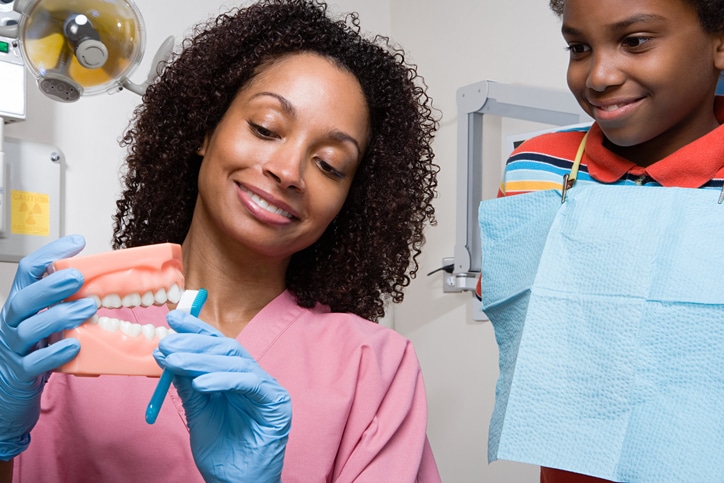
Fortunately, dental assistant school is an opportunity to gain a lot of knowledge about dentistry and the dental assistant profession. For example, you’ll learn about preventive dental procedures, dental radiography, and pharmacology. Of course, you don’t need to explain these concepts to children in much detail, but talking to them about how much training you did can help them feel well taken care of.
Do you want to learn how to become a dental assistant?
Contact Medix College to learn more about our dental assistant training
Interested in Dental Administration Courses? How to Handle No-Shows and Last-Minute Cancellations
June 07, 2019Last-minute cancellations and no-shows are a part of working in dental administration. As the backbone of a dental office, it’s up to an administration team to deal with this issue professionally and efficiently. Unfortunately, when a client is a no-show, other clients have missed out on their slot. In addition, scrambling to try and fill a last-minute cancellation is difficult, time-consuming, and takes away from other office duties.
To deal with this problem, you can apply your soft skills and a few simple strategies, to both discourage cancellations and handle them when they come up. Here’s a quick look at some of the tricks you can use.
Employ Strategies to Prevent Cancellations Before they Happen
As with habits like flossing, some of the best administrative tactics are preventative. Appointment reminders through calls, text messages, and emails keep clients aware and accountable. It can also be a good idea to not offer cancellation instructions in the reminders you send, as that information can get clients thinking about cancelling their appointment. Approaching appointments with the positive assumption that the client will come in can affect their behaviour more than you think.
Scheduling and rescheduling appointments, as outlined in dental administration courses, is a big part of running an effective dental office. When a client books an appointment, ask them to give adequate notice if something comes up. This buys you more time to deal with rebooking slots and makes the process less hectic. If a client does cancel, reschedule them, but not for the very next day or soonest available slot—unless the cancellation was completely unavoidable. This helps to show that time slots have value, making people less likely to want to give theirs up.
Soft Skills Complement Knowledge from Dental Administration Courses
Whether you are working as an office assistant, a dental secretary, or in another facet of dental administration, your soft skills will take you a long way. Your ability to connect with other people and understand where they are coming from will build rapport, even to the point where clients may look forward to coming to the dentist!
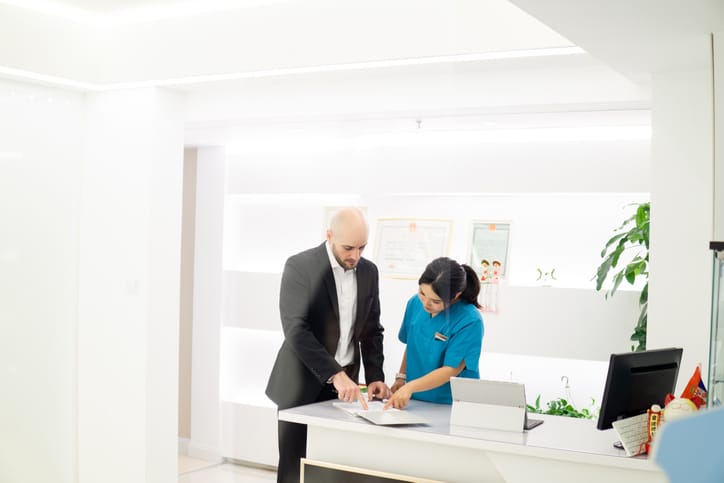
Getting to know your clients is a great way to help them trust you and feel comfortable at appointments
Use first names, take time to acknowledge each client as an individual, and lead with kindness. When people like you, they are more likely to want to follow your instructions and treat the dental office with respect, by showing up for their appointments. Dental anxiety and fear of going to the dentist are common reasons for cancelling or delaying appointments. If you can make nervous clients feel comfortable and safe with you, they’ll be more likely to feel they can handle coming in for their procedures and less likely to be no-shows.
Use Communication Skills You Picked up in Dental Administration Training
Backing up people-savvy soft skills with excellent, clear communication is a surefire way to make sure clients hear the information they need. This is why effective communication skills are part of a dental office administration program.
Understand why clients are cancelling. A good rule of thumb is to listen first, then respond. Cancellations happen, sometimes for upsetting reasons. If a client calls to say they can’t come in, show concern and ask if everything is okay. Next, ask clear questions about why they are unable to come in. If their situation sounds like it might be flexible, you can offer suggestions of what they could change to make it work. For example, maybe a client’s car is out of service but they live close enough to use public transport.

Take the time to understand what cancelling clients are going through so that you can help
Sometimes clients will take your advice and come in for their appointment, but if they just aren’t able, you’ve still offered friendly help, shown concern, and furthered your rapport with the client. This is all part of being a top-notch dental administrator.
Are you interested in dental administration training?
Contact Medix College for more information.




